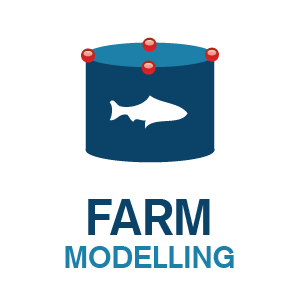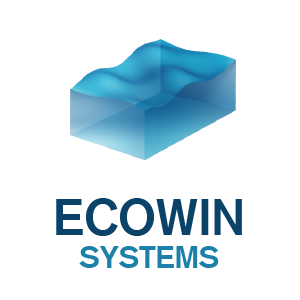
You are here: Home > Aquaculture and Fisheries > Nitrogen Credits
Nitrogen Credits
The Nutrient Pollution Problem
The main pollutant in many coastal bodies is nutrient over enrichment. Nutrient pollution causes an increase in phytoplankton in a water body. The increased nutrients stimulate plant growth, reducing the sunlight reaching the lower depths of the water body. The inability for phytoplankton to photosynthesize at lower depths causes the phytoplankton to die, creating eutrophic conditions.
The decrease in plant life reduces the amount of dissolved oxygen in the water body. The remains of the plant life sink to the bottom, where they are consumed by bacteria, further decreasing the dissolved oxygen levels, creating hypoxic conditions.
Shellfish as a Solution for Nutrient Removal
Nutrient pollution can be addressed through the reduction in nitrogen emissions. Nitrogen reduction in coastal areas can be addressed in two ways:
1. Top down approach that reduces the nitrogen in the water body through the use of shellfish aquaculture as well as enhancing tidal exchange.
2. Bottom up approach focuses on reducing emissions from point sources, including wastewater treatment plants as well as reducing nitrogen inputs from population and run-offs from fertiliser used in agriculture.
Bivalve shellfish - oysters, clams and mussels - feed on algae and other microscopic food found in coastal bays and estuaries. The food eaten by shellfish contains nutrients that are available in the food, including nitrogen, phosphorus and carbon. When bivalves feed on these particles, they use these nutrients to grow, filtering and cleaning coastal waters, benefitting underwater plants and other marine life. The bivave tissue and shells contain nitrogen from the filtering of nutrients for growth. When bivalves are harvested, this nitrogen is removed from the water column.
Bivalves also tend to enrich the sediments around them through biodeposits. This organic waste and material is filtered out of the water but not digested. Denitrifying bacteria in the sediments use the nitrogen that is released from the biodeposits for their energy, converting some of it into nitrogen gas that escapes from the water body.
Nitrogen Removal Analysis: Ria Formosa
The diagram below shows the net total of nitrogen removed from a Manila clam aquaculture operation in the Ria Formosa, Portugal. The system in the Ria Formosa removes around 28.9 t y -1 through the filtration of algae and detritus. The mass balance calculates the phytoplankton and detritus removal, nitrogen removal (algae, detritus, excretion, faeces and mortality) and the population equivalents for nutrient treatment.
Similar representations may be calculated for other shellfish farms, through the use of the FARM model.
The calculation of the economic value of substituting land-based treatment or reductions in agricultural fertilizer through top-down control by filter feeders sets an upper limit on the value of nitrogen credits. These could potentially be sold by shellfish farms to industry to offset the cost of the nitrogen externalities, similar to the way that carbon credits are currently sold.
Nitrogen Credits could also be sold/traded within a waterbody itself, with finfish aquaculture operations, in order to reduce the impact of particulate emissions from fish cages.
Shellfish provide a valuable ecosystem service through the removal of nutrients from a waterbody. Nitrogen credits provide a feasible alternative to land-based emission controls, addressing an economic externality of agriculture and other nutrient run-off sources.
How can I calculate my nutrient footprint?
Our modelling provides aquaculture farms and regulators with an accurate assessment of nutrient removal/input for shellfish and fish farms. We provide a range of nutrient assessments for shellfish and fish farms offshore. For onshore (land-based) aquaculture we are able to provide a nutrient assessment for shrimp and finfish farms addressing sustainability and certification issues.


